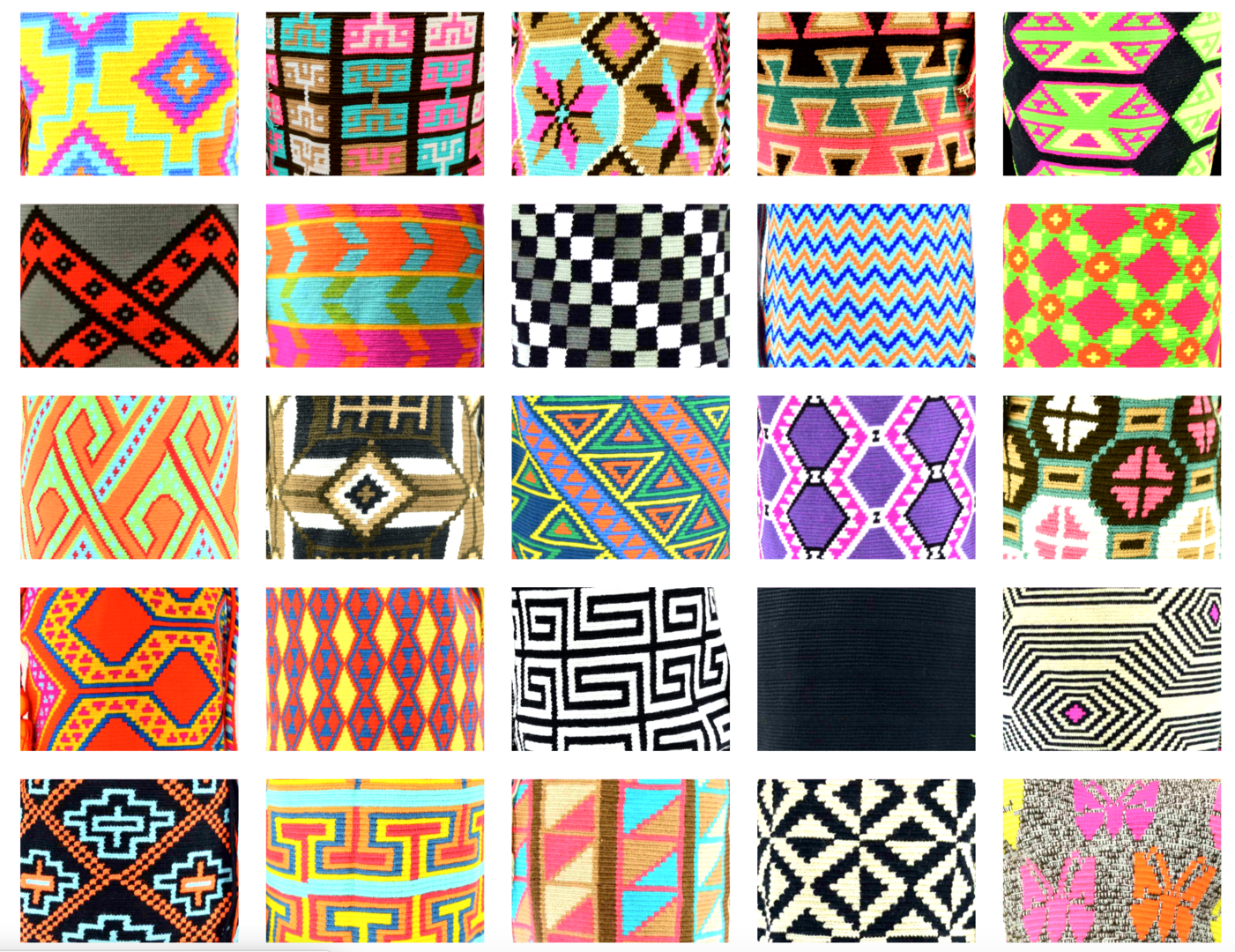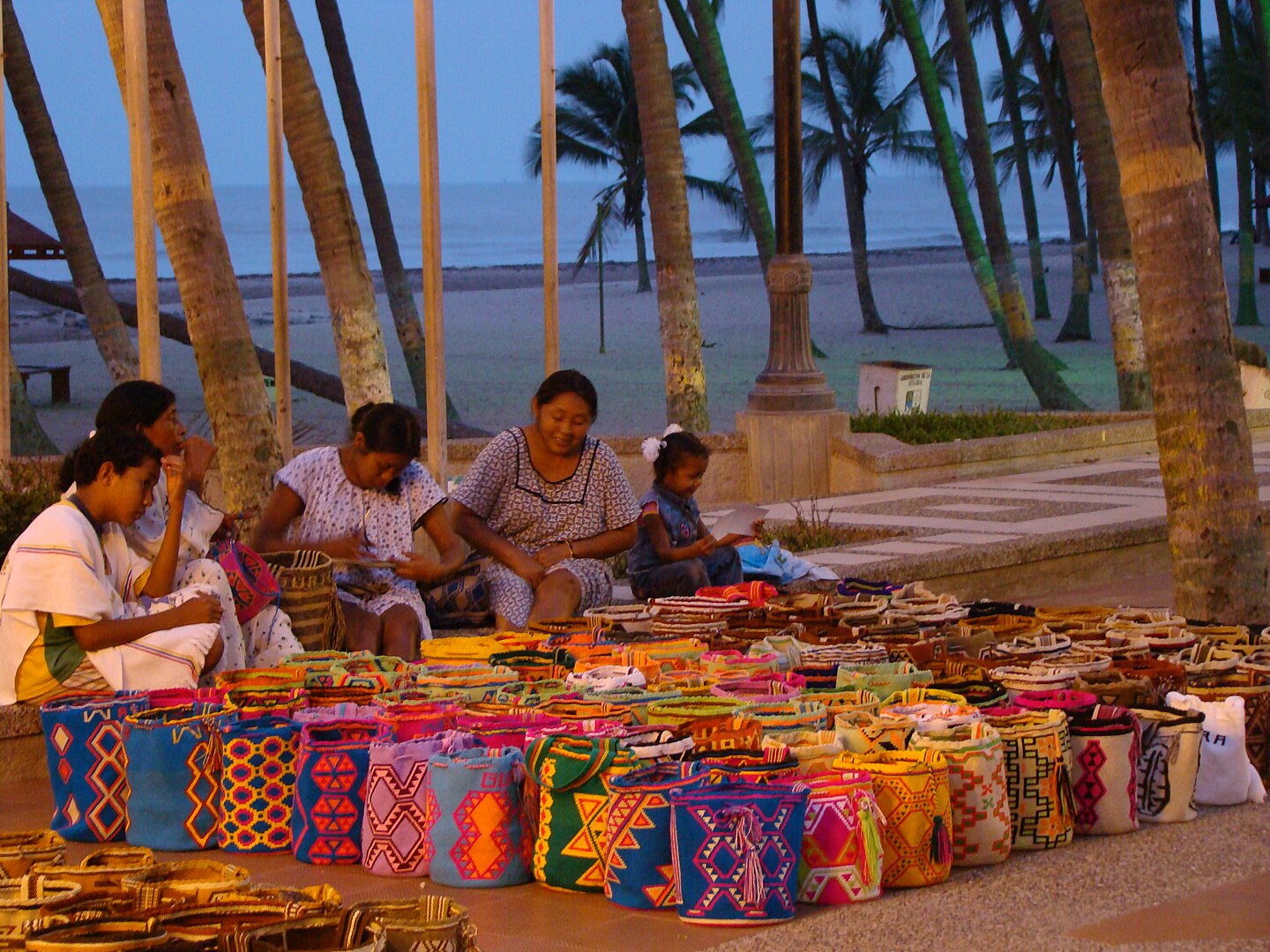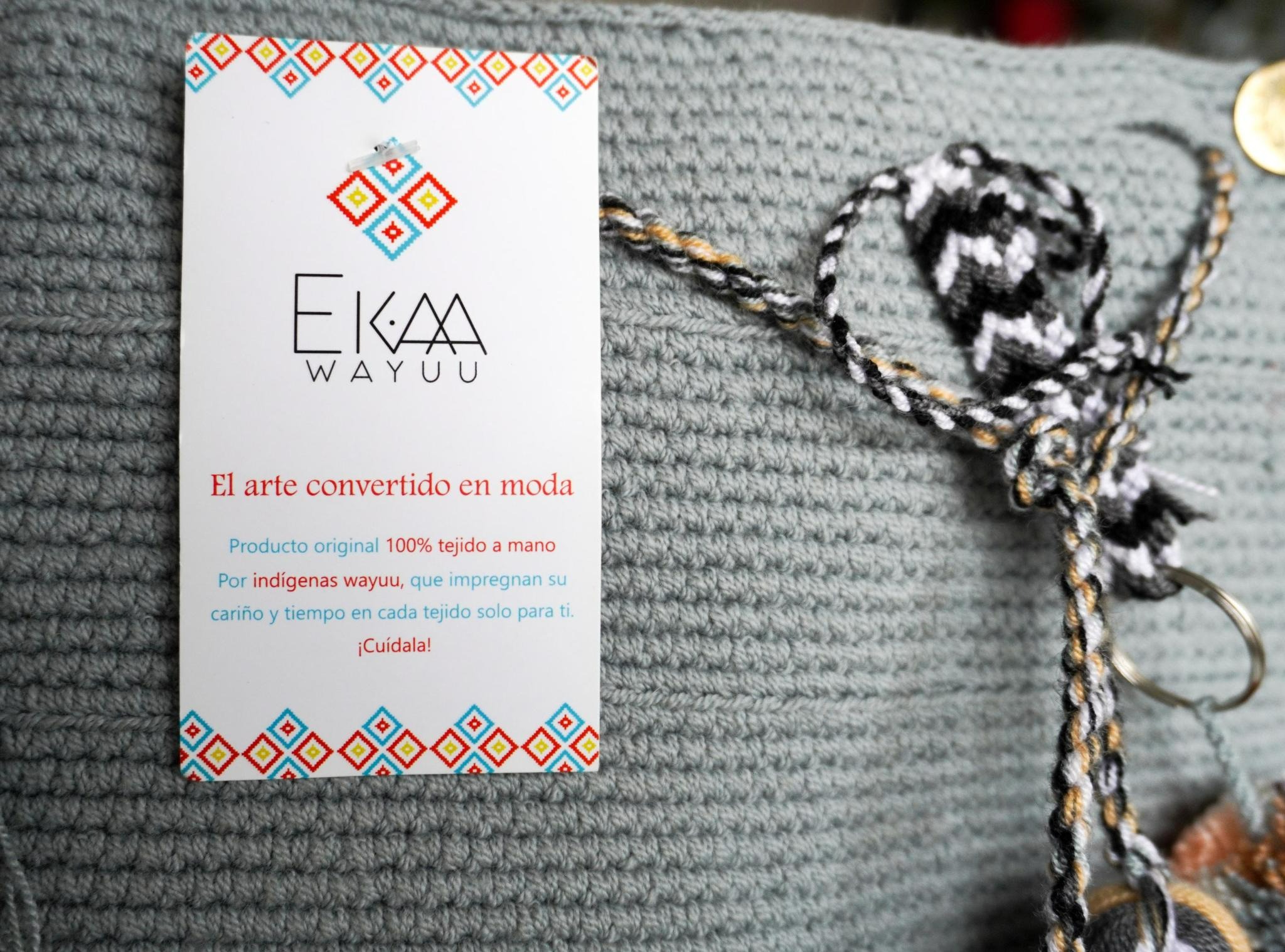Mochila bags, increasingly trendy and colorful totes, each display a unique expression indigenous Wayuu tradition. For centuries, the Wayuu people have inhabited the visually striking desert of La Guajira, Colombia, where conditions are harsh and the climate extreme. Inhospitable and remote, La Guajira served as a refuge, protecting the ethnic group from colonization by European conquerors.
Adapting to this hot, dry environment enabled the Wayuu to preserve their culture, traditions and way of life. The tribe is still organized in matrilineal clans, where women not only play a crucial role in family preservation and community decision-making, but also maintain a tradition inherent to their indigenous identity: the practical art of crochet.

Who are the Wayuu people?
When it comes to preserving ancestral traditions, the Wayuu are a model tribe. They maintain an indigenous system of administering justice, in which a member designated as Palabrero or “messenger of the word” resolves conflicts within and between clans, and with outsiders, through mediation and negotiation.
Illnesses are treated by members who either have spiritual power to heal others or have received ancestral knowledge transmitted orally. The Wayuu know how to use more than 175 species of plants for medicinal purposes.
Wayuu men spend their time grazing livestock, growing crops, and making musical instruments and rope-soled sandals, called espadrilles.
Success
You are now signed up for our newsletter
Success
Check your email to complete sign up
Before marriage, the groom has to reach an agreement with the bride’s parents in a meeting called ápajá, and give them the decided amount of livestock and jewelry. After marriage, wives become a symbol of respect and unity among the tribe by tending their feminine duties at home and mastering the art of crocheting and weaving for income.
Using numerous colors and intricate designs, the Wayuu women create hammocks, bags, purses and many other functional objects, capturing the richness of their culture and traditions in their craft. The more complex the design, the higher its quality and value.
Mochila artisanship and indigenous identity
The Wayuu mochila bag is their quintessential traditional craftwork. Every Wayuu bag is a unique piece of art that reflects the weaver’s inner world; and each colorful design tells a story that reflects Wayuu traditions.
Upon reaching puberty, a Wayuu girl is taught by a skilled craftswomen to grace her work with positive values like industry and sincerity. The quality of the bag is a measure of her competence and virtue.
The weaving and crochet should be tight and firm, as loose mesh or threads would indicate the item was hastily made or that they had economized on yarn. The colors, patterns and shapes in their handicrafts have been passed down from memory through generations, preserving the essence of their culture.
Many of the symbols used on the bags are personal interpretations and abstractions of elements from the material world. These compositions, which are given a descriptive name, are usually geometric and are repeated throughout the pattern. Examples include Molokonoutaya, or shell of the yellow-footed tortoise, Siwottouya, or footprint left in the sand by a driven horse, and Jime’uya, or fish eye.

Origins of the craft
According to legend, it was Wale´kerü, a spider deity, who taught the first Wayuu women to weave. Wale´kerü was a highly skilled weaver who could produce many hammocks and other pieces before each sunrise. She also sketched all her designs in the winter, before spring arrived.

As the story goes, Wale´kerü fell in love with a Wayuu man. When the man took the spider to meet his family, the mother gave them pieces of cotton to weave. Wale´kerü ate all the cotton and produced from her mouth the thread — already spun and ready to weave.
Wale´kerü began to teach weaving to all the Wayuu women. The talented spider always asked the women to pay close attention because she couldn’t keep repeating everything all the time.
What does it take to make a Wayuu bag?
Depending on the intricacy of the design and the skill of the weaver, it can take about two weeks to an entire month to complete a single Wayuu mochila bag. The body of the bag is crocheted using multiple colors of yarn with one hook — a task made no easier by the propensity for the threads to tangle.
For the strap, Wayuu women employ a technique used for centuries in which a single thread of cotton is placed in a manual loom.
Traditionally, Wayuu bags were made from natural fibers like wool or fique (a plant similar to agave). Earthy reds, yellows, browns, greens and black were common colors obtained from natural dyes, usually of botanical origin.

With the introduction of industrialized cotton — and later acrylic — fabrication became considerably less expensive, although no less labor intensive. Subtle natural dyes were largely replaced by vibrant, lasting synthetic dyes. Vivid hues made the lively patterns ever more eye-catching, and the bags soon became the most exported handicraft in all of Colombia.

Today, Wayuu bags are a major component of the Wayuu economy and an important source of income. In recent decades, however, many Wayuu people have been swindled by third parties who profit from their work. Traders buy their bags at a low price and make a huge profit selling to foreigners who appreciate traditional craftsmanship. This has led to difficult economic situations for the Wayuu, who sometimes find it difficult to put food on the table.

When buying a Wayuu mochila bag, it is important to ensure that they are ethically produced and fair trade compliant. Asking these questions of a supplier can not only help Wayuu women get a fair price for their efforts, but also help preserve a colorful legacy of traditional values and craftsmanship.












